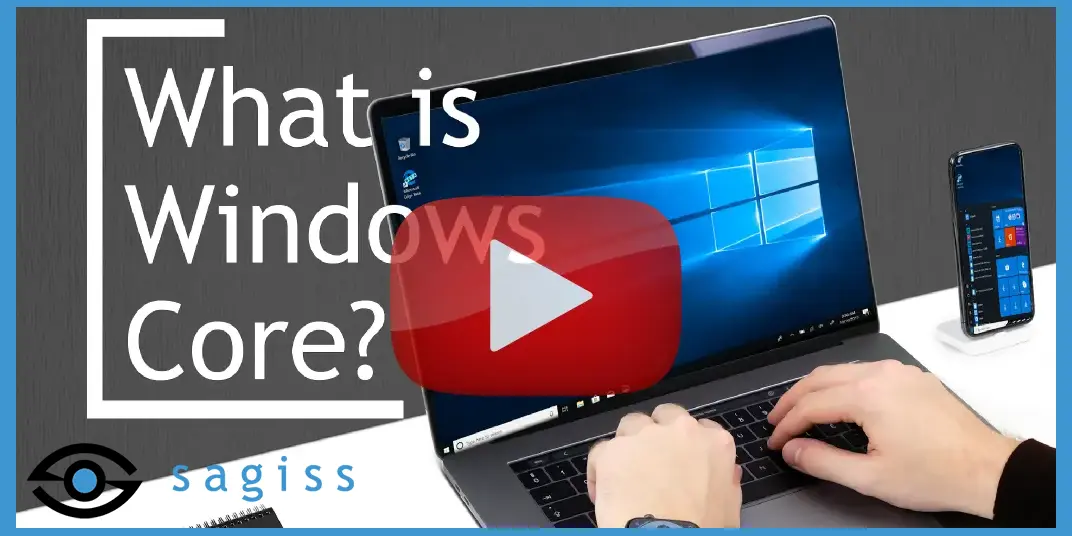1 min read
What is Windows Core OS?
Published: October 10, 2019 Updated: April 10, 2024

In October 2019, Microsoft announced the upcoming release of Windows Core OS.
Naturally, users had questions. And Sagiss created the materials in this blog post to help.
Below is an adapted transcript of the embedded video.
What is Windows Core OS?
Windows Core OS is a stripped-down version of Windows, adaptable and modular in its design.
It isn't a consumer end product though. Instead, it is a foundation you can expect to power the next generation of Microsoft devices.
If you followed any of the news concerning products developed by Microsoft, you've seen some of the devices Windows Core OS already been adapted for.
One example would be Hololens 2, which is an augmented reality (or mixed reality) headset. And another example would be the Surface Hub 2X, an interactive whiteboard.
The concept for a Core framework has been around since the modern operating system. Modules can be built around and onto so they can adapt to different functions. Those functions can be as wildly different as the aforementioned Hololens 2 to a Surface tablet.
What are the different versions of Windows Core OS?
There are three versions of the Windows Core OS:
-
Aruba.
-
Oasis.
-
Santorini.
Aruba
Aruba powers the Hololens 2X. It is tailored to the collaborative display, enabling it to rotate the display and combine it with other displays.
Aruba has a multi-user interface. All users can share files and documents and changes to those documents across real time.
Oasis
Oasis is designed specifically for the Hololens 2. It enables gesture controls to grab, scale, or move objects. It also enables finger, head, and eye tracking—all the features crucial for high-end artificial reality headsets.
Santorini
Santorini has also been referred to as Windows 10X and Windows Lite.
It's focused on battery optimization. Santorini will be a stripped-down version of Windows supporting mobile computing and productivity-focused computers.
Windows 10X is often shown on the new Surface Neo, a dual-screen laptop.
Where does Windows 10 fit with Core OS?
Windows 10 will be referred to as Windows Classic and will continue to be updated and maintained in tandem with Windows Core OS. So Microsoft will not be getting rid of Windows 10 any time soon. But Windows 10 (or Windows Classic) will be targeted at higher-end PCs for power users, gamers, businesses, and manufacturers.
Windows as you know it isn't going anywhere. Windows Core OS is just there to fill in some of the blanks Windows 10 has left.
 Rob Schnetzer
Rob Schnetzer